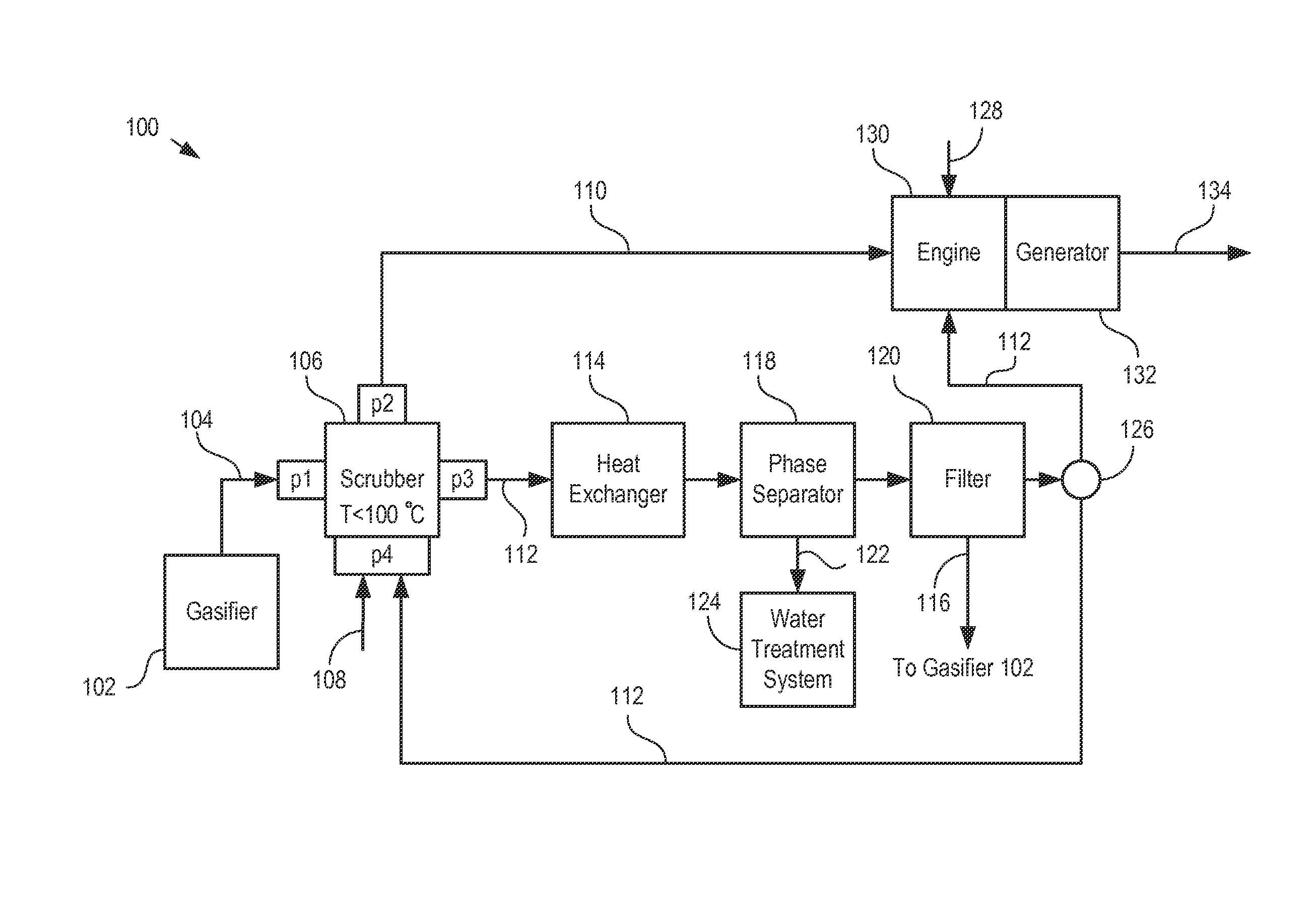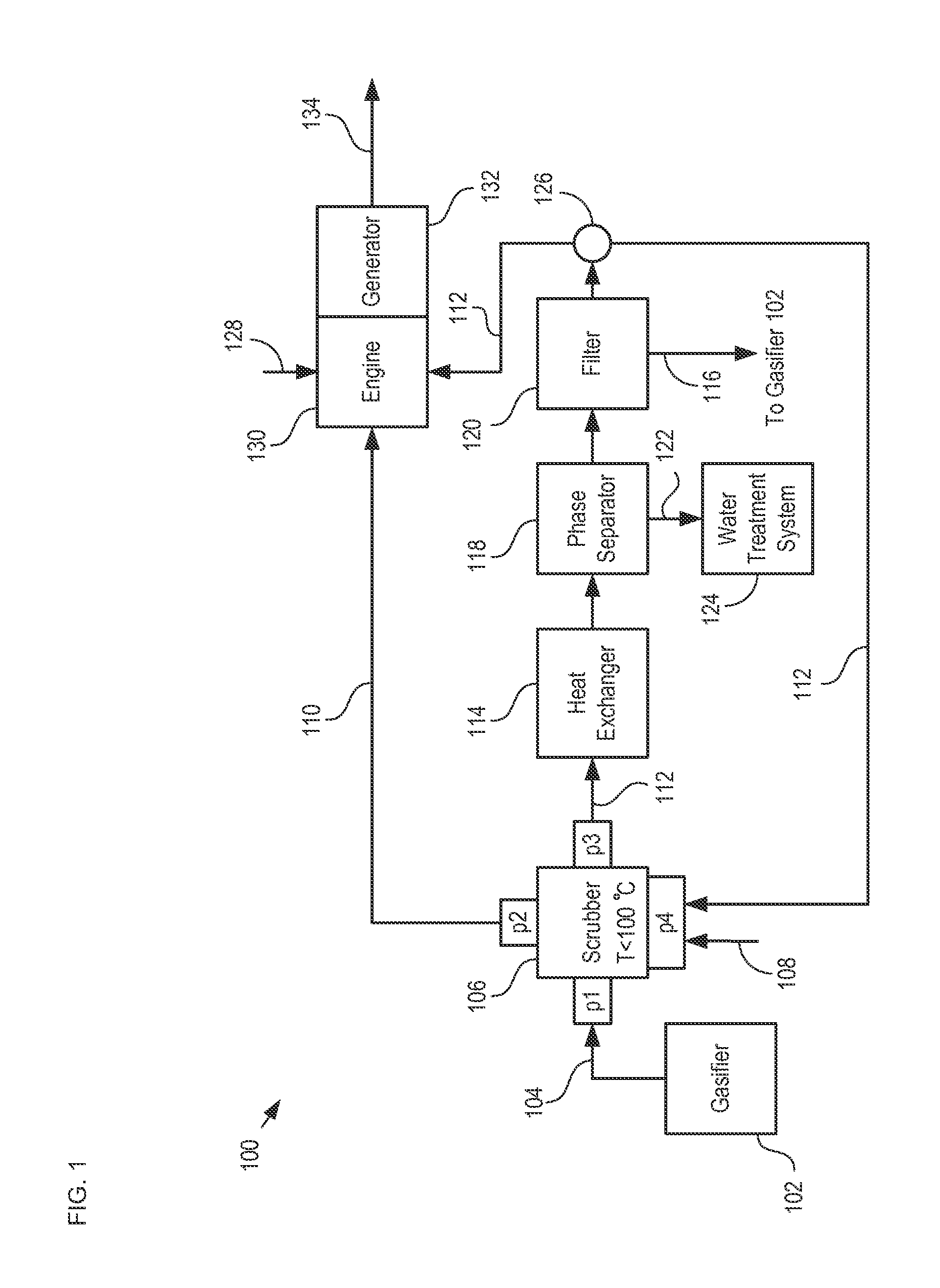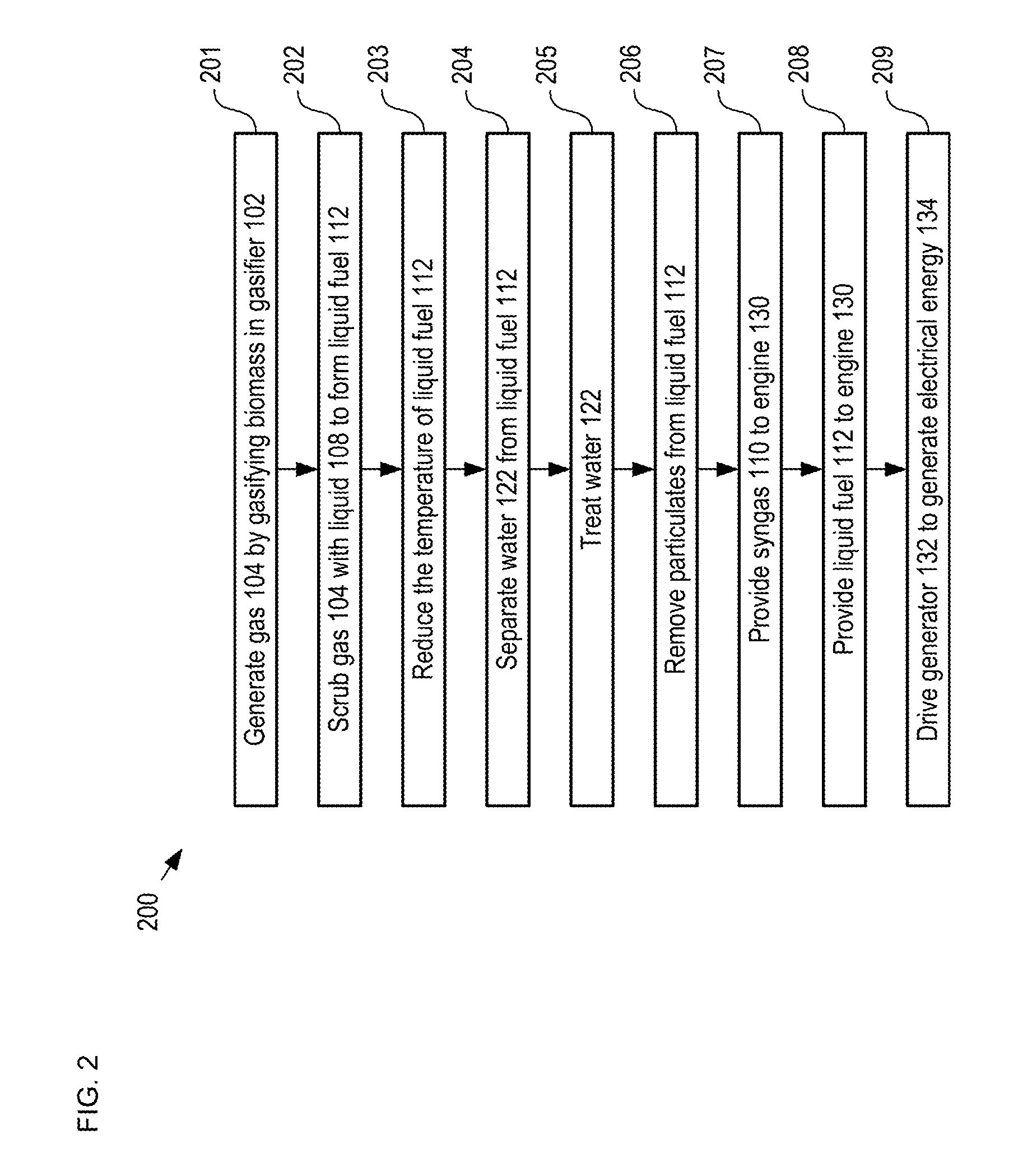Tar scrubber for energy recovery from gasification operations
a technology of gasification operations and scrubbers, which is applied in the direction of sustainable manufacturing/processing, furniture, separation processes, etc., can solve the problems of environmental pollution concerns, energy systems that typically further reduce the tar content of generated syngas, and the use of these sub-systems adds considerable expense to these systems
- Summary
- Abstract
- Description
- Claims
- Application Information
AI Technical Summary
Benefits of technology
Problems solved by technology
Method used
Image
Examples
Embodiment Construction
[0028]The following terms are defined for use in this Specification, including the appended claims:[0029]“tars” are defined as compounds representative of high-boiling-point aromatic hydrocarbon mixtures and other organic compounds. An example of a tar is a high-boiling-point aromatic hydrocarbon that results from a gasification reaction.
[0030]The goal of any waste-to-energy-conversion is to maximize the amount of combustion that takes place in the internal combustion engine where the generated energy can be used to produce useful work. Embodiments of the present invention enable the capture of vapor-phase tars from the output syngas stream of a gasifier using a first liquid fuel as the scrubbing medium. The captured tars are then converted into a second liquid fuel that can be combined with the first liquid fuel and fed to an internal combustion engine, thereby increasing the total volume of liquid fuel available to power the engine. As a result, embodiments of the present inventio...
PUM
 Login to View More
Login to View More Abstract
Description
Claims
Application Information
 Login to View More
Login to View More - R&D
- Intellectual Property
- Life Sciences
- Materials
- Tech Scout
- Unparalleled Data Quality
- Higher Quality Content
- 60% Fewer Hallucinations
Browse by: Latest US Patents, China's latest patents, Technical Efficacy Thesaurus, Application Domain, Technology Topic, Popular Technical Reports.
© 2025 PatSnap. All rights reserved.Legal|Privacy policy|Modern Slavery Act Transparency Statement|Sitemap|About US| Contact US: help@patsnap.com



